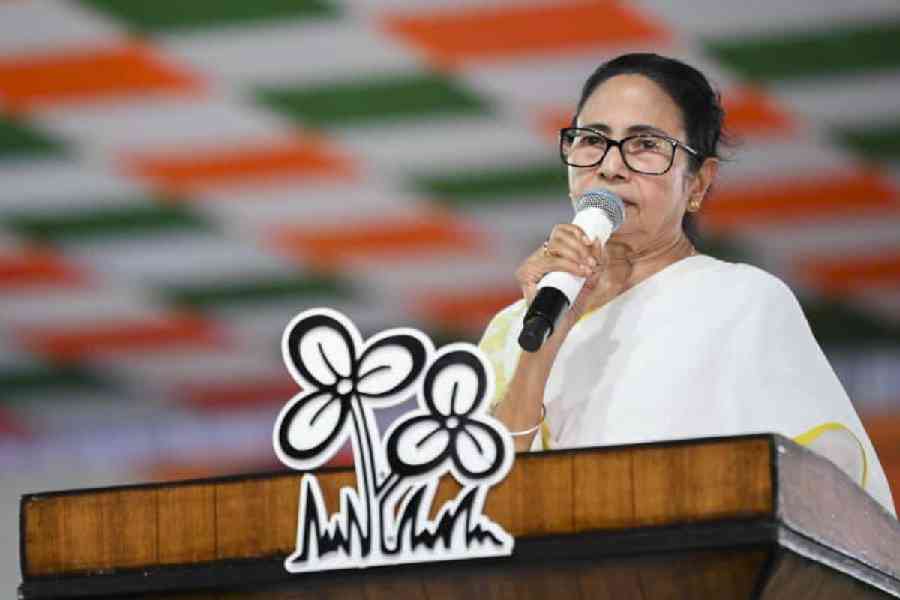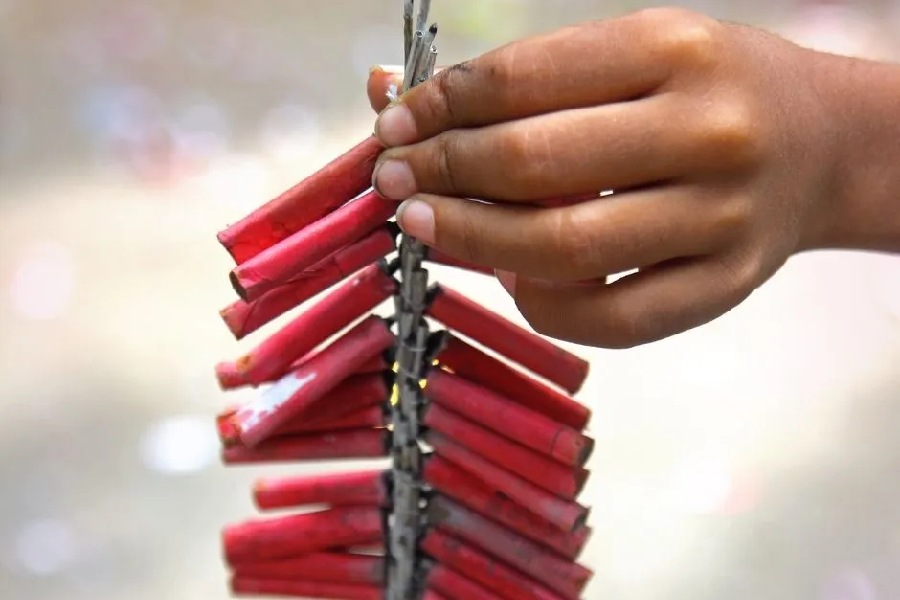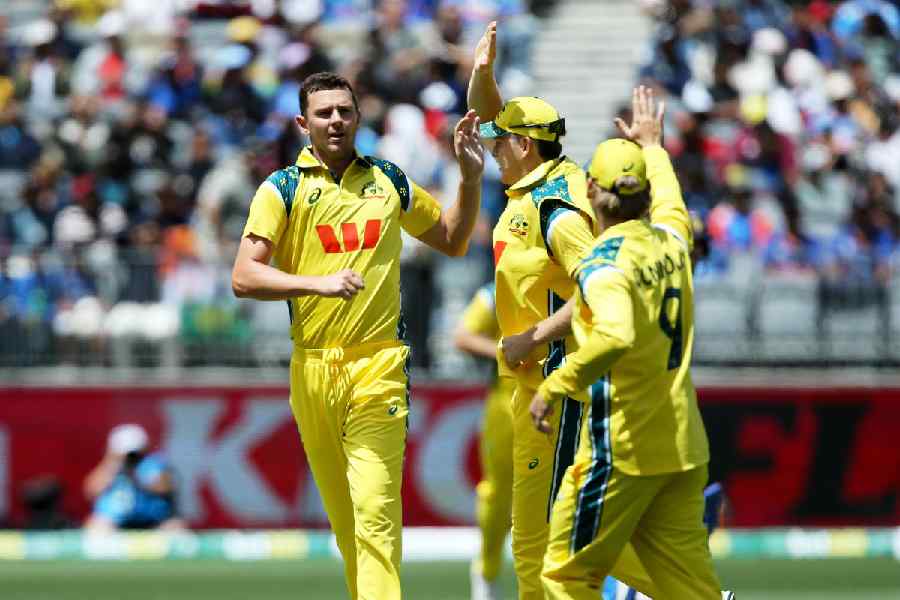 |
| The exercise books of Gautam Buddha Shikshan Sansthan students Raunak and Badal. Picture by Suman |
The exercise books of Class V students Raunak and Badal are almost a mirror image of each other, but wait before concluding that a friend has helped the other complete his homework.
Welcome to Gautam Buddha Shikshan Sansthan, a co-educational school in Gaya’s Jharna-Saren village, where students have similar handwriting. The school is in Bathani block, around 50km northeast of Gaya and about 150km southeast of Patna.
That the students have similar handwriting is not a coincidence, though. The teachers of the institution train 100 students in developing a particular handwriting style in over three years of practice. The school management said the aim is to strive to be different from other institutions.
Gautam Buddha Shikshan Sansthan principal Chandramauli Prasad Bauddha outlined the technique the teachers follow to train the pupils.
Class I students are first taught the handwriting style on a slate. At this stage — it continues for six months — the students can only use chalk to write. In the second stage, the students are given exercise books and a pencil to practise the script. This phase continues for at least one-and-a-half years. By the time the students are in Class III and are able to master the style, they are allowed pens.
The students are trained in both block or print and cursive style. The training module is of three years. The result, Chandramauli said, is “similar digits and Hindi and English scripts”.
Though senior administrative officers have vetted the school’s claim, forensic experts are not convinced. According to them, minute examination of “similar” handwritings will always bring up some sort of dissimilarities. A forensic test on the students’ handwriting has not ever been done as well. The experts said a scientific opinion on the school’s claim could only be possible after a forensic test.
State Forensic Laboratory director Umesh Sinha told The Telegraph over telephone from Patna: “It is not possible that the handwriting of 100 children is similar. They might appear so at a glance. But when checked minutely, forensic differences would certainly come up.”
The children are, however, unlikely to flinch from such observations. Anshu Kumar, a Class V student, said: “When other people see our handwriting, they are surprised. It is of distinct quality and is developed only among the students of our school.”










